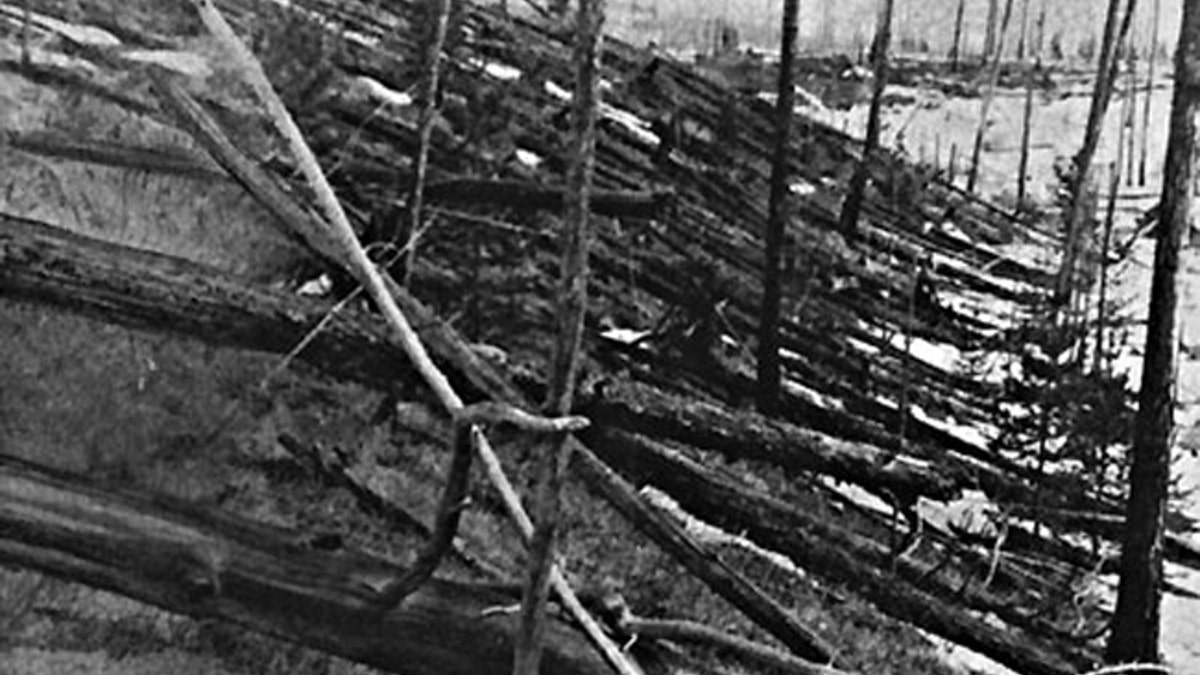
(AP)
The site of Friday's spectacular, 10-ton meteor blast is roughly 3,000 miles west of Tunguska -- the site of the largest-ever recorded explosion of a space object plunging to Earth.
That 1908 blast, which was later attributed to a comet or asteroid fragment, is generally estimated to have been about 10 megatons. No injuries were reported, but some 80 million trees over 830 square miles were leveled in the blast known as the “Tunguska event.”
The explosion near the Podkamennaya Tunguska River on June 30, 1908, reportedly flattened some 500,000 acres of Siberian forest. Scientists calculated the Tunguska explosion could have been roughly as strong as 20 megatons of TNT, or roughly 1,000 times more powerful than the atomic bomb dropped on Hiroshima, Space.com reported.
The longstanding theory regarding the cause of the event is a cosmic impact from an asteroid or comet. In the last decade, researchers have conjectured the event was triggered by an asteroid exploding in Earth's atmosphere and measuring roughly 100 feet wide and 617,300 tons in mass — more than 10 times that of the Titanic.
But supercomputer simulations in 2008 suggested the asteroid that caused the extensive damage was much smaller. Specifically, physicist Mark Boslough at Sandia National Laboratory in Albuquerque, N.M., and his colleagues said it would have been a factor of three or four times smaller in mass and perhaps 65 feet in diameter.
As the asteroid exploded as it entered Earth's atmosphere, Boslough and colleagues calculated it would have generated a supersonic jet of expanding superheated gas. The resulting fireball would have caused blast waves that were stronger at the surface than previously thought.
Prior estimates, however, may have overstated the devastation the event caused. The forest back then was unhealthy, according to scientists, so it would not have taken as much energy to blow down such trees. In addition, the winds from the explosion would naturally get amplified above ridgelines, making the explosion seem more powerful than it actually was. Therefore, what researchers had thought to be an explosion between 10 and 20 megatons was more likely only 3 to 5 megatons, Boslough said.
As to whether the impact was similar to a stony, carbonaceous asteroid or a comet, "while the community has pretty much accepted the view that it was a carbonaceous asteroid, I'm not sure it's a slam dunk," Boslough told Space.com. "The main argument against it being a comet is statistical. There are a lot more small Earth-crossing asteroids than comets, at least by a couple orders of magnitude. While it's unlikely to be a comet, I'm not convinced it's physically impossible."
Scientists believe an even larger meteorite strike may have led to the extinction of dinosaurs roughly 66 million years ago. According to that theory, the massive impact would have thrown up vast amounts of dust that blanketed the sky for decades and altered the Earth’s climate.
Meteors are pieces of space rock -- typically from larger comets or asteroids -- that enter the Earth's atmosphere. Many are burned up by the heat of the atmosphere, but those that survive and strike the Earth are called meteorites. They release a huge amount of force when they hit the ground at tremendous speed — up to 18,642 mph, according to the European Space Agency.
Smaller strikes happen five to 10 times a year, experts say. Large impacts such as the one Friday in Russia are rarer but still occur about every five years, according to Addi Bischoff, a mineralogist at the University of Muenster in Germany. Most of strikes occur in uninhabited areas where they don't cause injuries to humans.
The Associated Press contributed to this report.




















